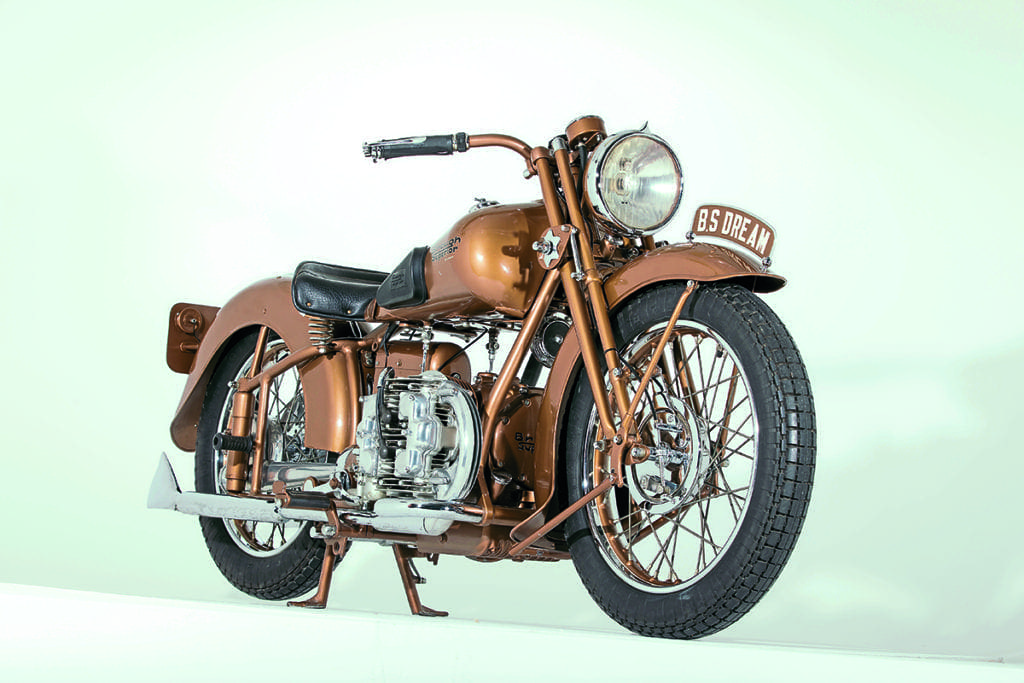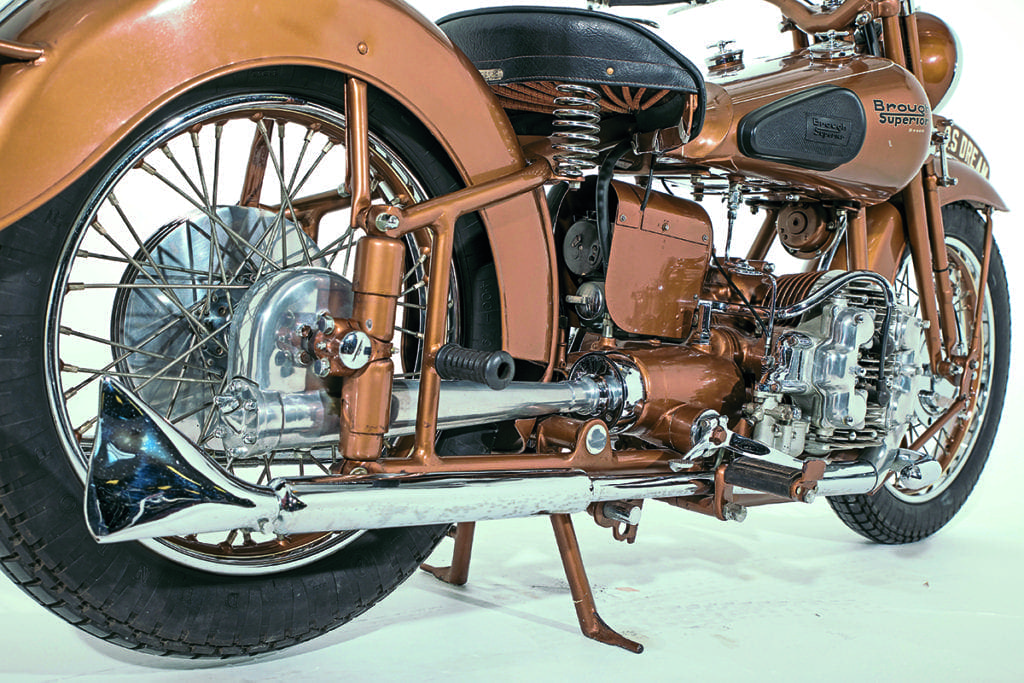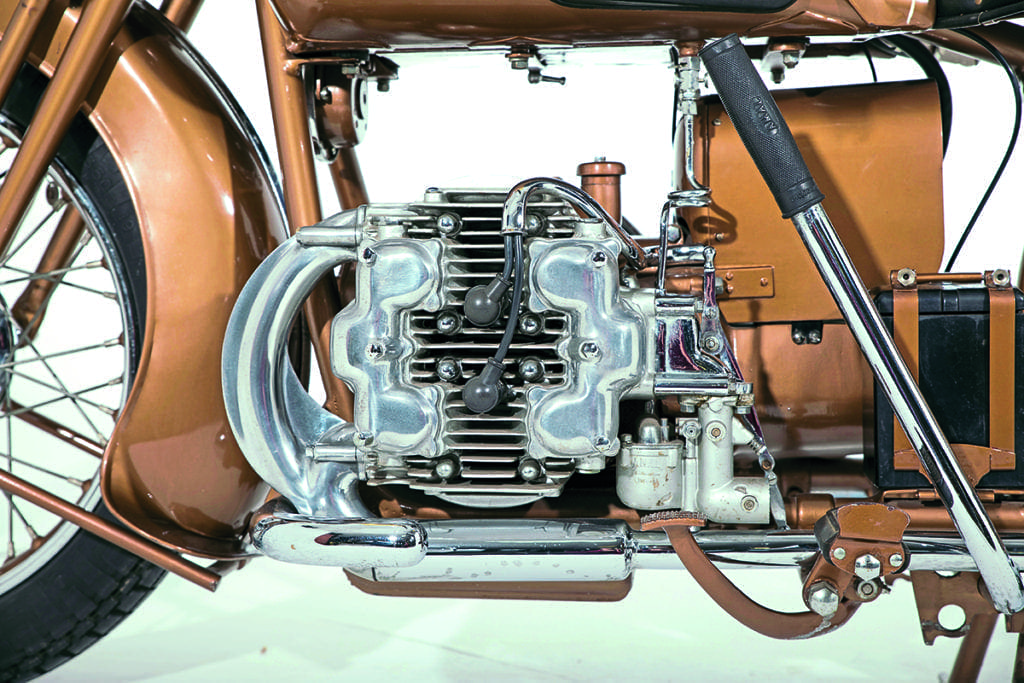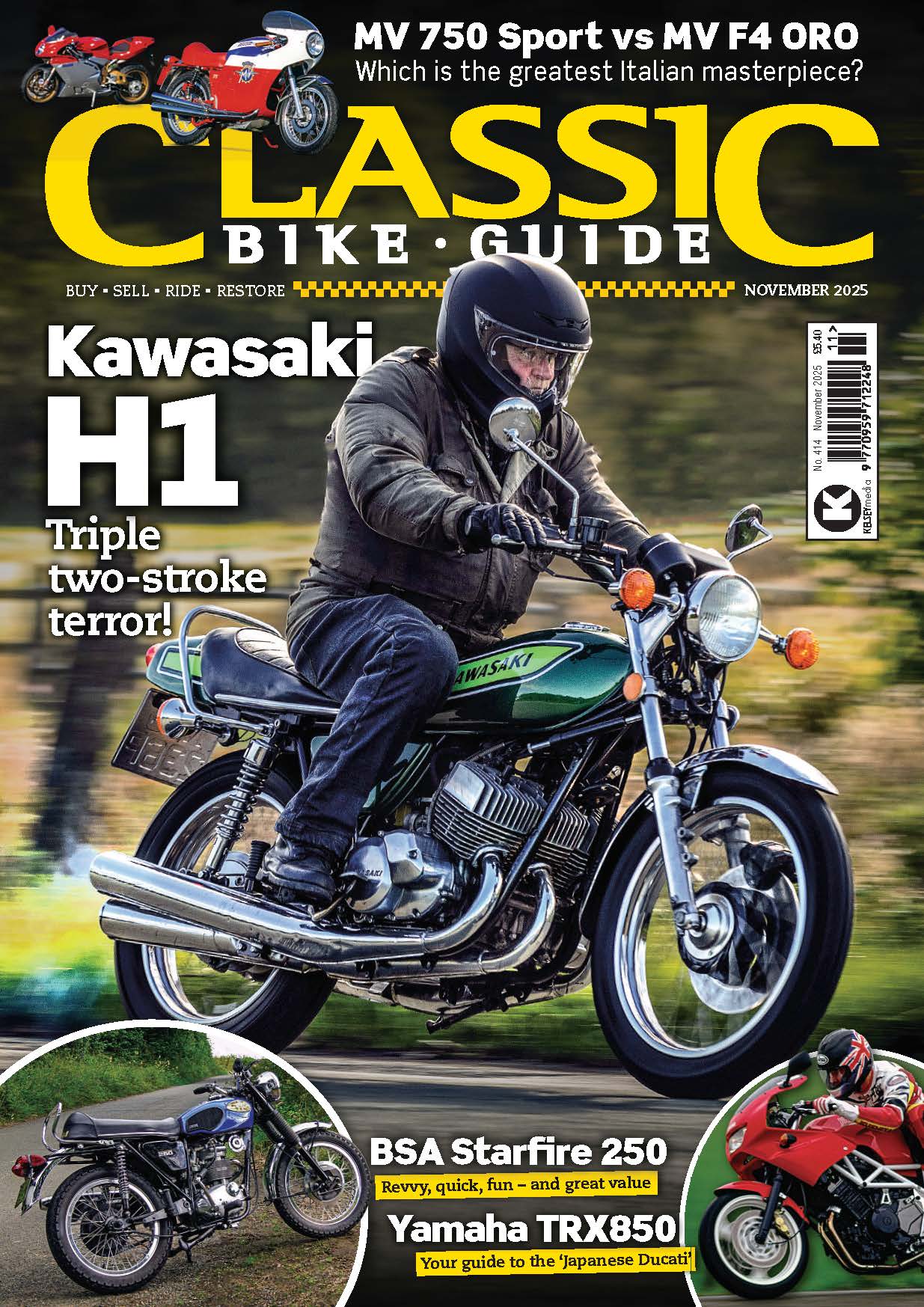It’s November 7, 1938 and a sea of hats is flocking to the opening day of the Earls Court Motorcycle and Cycle Show. Even the Duke of Kent is making an appearance.
Visitors fill the floor, eager to see the latest offerings from Ariel, BSA and Norton, among dozens of other marques. This is the Machine Age, after all, and the Earls Court show is its crowning glory.
But there’s one particular stand – 12a, to be precise – to which the crowds show particular reverence. Here, the Rolls-Royce of motorcycle manufacturers, Brough Superior, displays its piece de resistance: the aptly-named Golden Dream. It was, as reported in Motor Cycle, ‘the sensation of the show’.
Enjoy more Classic Bike Guide Magazine reading every month.
Click here to subscribe & save.
For starters, the Golden Brough is the only Brough not to be finished in chrome: it is, quite literally, golden. It’s also the first time a motorcycle has been painted in metallic paint, which only adds to its spectacle.

And then there’s the shaft-drive power unit: a horizontally-opposed four cylinder engine with the two cylinders on each side stacked on top of each other with overhead valve cylinder heads.
Crankshafts are geared together to allow sufficient cooling air to be distributed across the four stacked 71 x 63mm cylinders. The design is unusual in the sense that the pistons are designed to run side to side rather than in-and-out, as per a Volkswagen crank configuration, which is the typical boxer firing arrangement.
Indeed, Motor Cycle certainly picked up on the Golden Brough’s unusual engine configuration. The report reads: “It may be true that ‘all is not gold that glitters’ but in this case even the gold finish is matched by the brilliance of a design of absorbing interest. The power unit virtually consists of two engines geared together with their cylinders set across the frame.”
The report also noted the machine’s ball-mounted head lamp, concealed toolbox and rear wheel suspension. Put simply: Motor Cycle couldn’t shower enough praise on the Golden Dream.

But the machine’s origins were controversial. George Brough lavished the Golden Dream’s media accolades but remained tight-lipped about the original design concept of the flat-four motorcycle.
Then, in 1956, it emerged that the original design proposal for the Golden Dream had come from a certain Capt Palethorpe.
Palethorpe – a keen hydroplane enthusiast –conceived an engine that could be used in a motorcycle and a hydroplane and proposed the concept to George Brough as a means of spreading development costs between Brough’s motorcycle interests and Palethorpe’s personal passion, hydroplanes.
The prototype Brough engine was manufactured by Sharland Motors, who also manufactured Palethorpe’s hydroplanes.

The prototype Dream was soon ready for testing. This initial engine was long-stroke and manufactured purely for analysis using forks and a frame available at the time. But it proved unsatisfactory.
George Brough then decided to manufacture his own transverse flat-four version – only this time it would be a short-stroke – and then presented the revised Dream as an in-house concept.
Brough’s short-stroke engine was produced with help from development engineer and two-time TT winner Freddie Dixon and H J Hatch of Burney and Blackburn Ltd. Hatch was the brains behind the Excelsior Mechanical Marvel, the 1929 Lightweight TT-winning machine, named so because of its complex valve gear, and the iconic AJS 7R racer.
For the FULL feature about the 1938 Brough Superior Golden Dream, get your hands on the February edition of Classic Bike Guide, just click her to purchase your copy.



